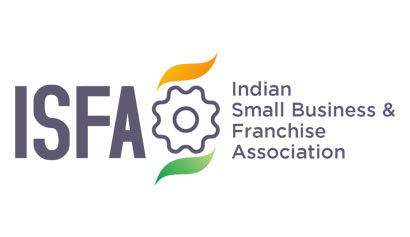To get access to over 10000+ Franchise Business Opportunities.
Network with the growing Business Community to get expert interventions to let you learn to Grow & Expand your Business with Franchising.
Fund-raising is an ongoing and seemingly never-ending process. Each phase of business has different capital requirements. While most large projects are normally outside the capacity of any business to fund it internally, implementation of one or a combina
Fund-raising is an ongoing and seemingly never-ending process. Each phase of business has different capital requirements. While most large projects are normally outside the capacity of any business to fund it internally, implementation of one or a combination of the choices given can reduce the level of external capital required.
FOR most businesses, using internally generated capital is the easiest and cheapest way to fund growth. Remember growth, particularly rapid growth, can be cash-hungry and may consume large amounts of your cash flows. One of the most common reasons why businesses face insolvency is due to cash flow issues, as opposed to a lack of profitability. Sound cash flow management is critical for business success, especially for fast-growing businesses.
External capital may not be the only means to grow your business. Growth potential can be constrained by a range of issues. Experience suggests that in the majority of cases, it is not capital but better information, better analysis, more sales and more or better people that help realise business growth. Getting the right type of funding or capital for business growth can make a big difference to the success of your business. The common reasons for raising capital include working capital for growth, acquisitions, new product, service or market development, capital expenditure or restructuring. The most suitable source and type of capital for your business will depend on the nature of the project, amount required, type of business, market characteristics, business growth ambitions, size and timing of cash flow and the stage of business growth. Every business is different and capital growth initiatives need individual consideration.
Most franchise businesses do require some type of funding to make for the difference between the cash advancement and the expenses until it sees a profit. The major costs associated with starting a franchise are:
= Franchise and training fees
= Equipment fees
= Software and licensing fees
= Location costs
= Miscellaneous expenses ( advertising, utilities, rent, etc)
Funds, investors & stages of growth
There are four stages in the franchise business: the seed stage, the early stage, the growth stage and the expansion stage. During the seed stage, you need the support of family and friends, angel investors and incubators. In the early stage, usually venture capitalists invest. During the growth stage, there are bank loans, debt markets and private equity and in the expansion stage, there are IPOs and mezzanine capital.
l. The Seed Stage (Angel Investor, Business Incubator)
Because the company is new, the term “seed” is used. Also, hopefully, the seed money, that's put in by family and friends, will help in growth. Sometimes, stock is issued for new investors. This is usually when an angel investor steps in and gets in early on in the business. He fills the gap between friends and family and venture capitalists, as usually, friends and family cannot raise more than a few thousand dollars. Besides, there is business incubator. Its most common services are networking activities, marketing assistance, high-speed Internet access, help with accounting/financial management, access to bank loans, loan funds and guarantee programmes, links to higher education resources, links to strategic partners, access to angel investors or venture capital, comprehensive business training programmes, advisory boards and mentors, etc.
2. The Early Stage (Venture Capitalists)
In the early stages, a company hopes to get market validation even though there are no or low returns. This is when a venture capitalist steps in. They are very selective in investing and as a thumb rule, may invest in one in 400 opportunities presented to them. They are interested mainly in opportunities that are most likely capable of providing financial revenues and a successful exit within the required timeframe (typically three to seven years) that they expect. There is a need for high return that makes venture funding an expensive capital source for companies and most suitable for businesses having large up-front capital requirements, which cannot be financed by cheaper alternatives such as debt. It is most commonly used in intangible assets such as software and other intellectual property, whose value is not proven.
3. The Growth Stage
(Debt Market, Private Equity)
Assuming that a business does well in the seed stage as well as the early stage, it moves onto the growth stage, where it faces operational challenges as well as expansion. It moves on from bigger loans to bank loans, debt markets and private equity.
4. The Expansion Stage
(Mezzanine capital, IPO)
In this stage, the business is consolidated by merging smaller companies into a big one. Since this stage is an exit stage, a sale or merger may provide a more rapid exit and avoid exposure to unpredictable public market volatility. This stage does not have much funding except the mezzanine capital and the initial public offering (IPO).
BOX_1
The common reasons for raising capital include working capital for growth, acquisitions, new product, service or market development, capital expenditure or restructuring.
BOX_2
An angel investor is usually an affluent individual, who provides capital for the business in exchange for ownership equity. Angel investors usually invest their own funds.
Business incubator is a type of programme designed to accelerate the successful development of entrepreneurial companies through an array of business support resources and services.
BOX_3
A venture capitalist is a person who invests in a business venture, providing capital for start-up or expansion. They look for a higher rate of return than would be given by more traditional investments.
BOX_4
A debt market is a situation, where trading debt instruments, like mortgages, promissory notes and CDs are traded between interested parties.
Private equity is an asset class consisting of equity securities in operating companies that are not publicly traded on a stock exchange. In a typical transaction, the private equity firm buys majority control of an existing or mature firm.
BOX_5
The mezzanine capital refers to a subordinate debt or preferred equity instrument that represents a claim of the company's assets, which is higher than the common stocks.
The initial public offering is when a company issues common stock to the public for the first time. It is often done by small, younger companies seeking to expand but can also be done by large, publicly owned companies looking to become publicly traded.


Business Opportunities
Browse By Investment Range
Browse By States
Popular Cities
We value your privacy.
You can unsubscribe anytime















